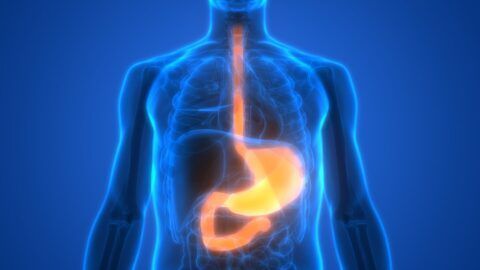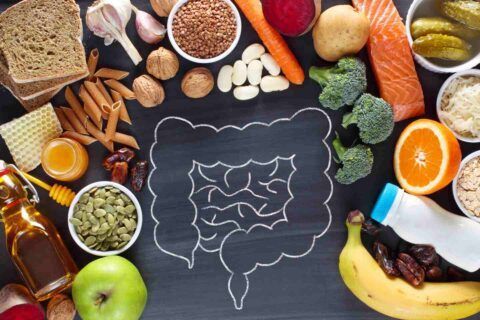WHAT IS A SWALLOWING DISORDER?
Everyone has trouble swallowing from time to time. You may find it difficult to chew a tough piece of meat, gag on food with an unpleasant texture, or cough and choke after food goes down “the wrong pipe.” If this happens to you occasionally, make sure you’re taking small enough bites and chewing thoroughly before you attempt to swallow. However, if you have these kinds of problems all the time, you may have a swallowing disorder. Difficulty swallowing, or dysphagia, can occur at any age, and the possible causes vary. Learn more about this serious medical condition so you can pursue the professional testing and treatment you need.
SIGNS OF SWALLOWING DISORDERS
Swallowing is a three-phase process:
- The oral phase involves chewing, sucking, and moving food or liquid toward the throat.
- The pharyngeal phase is when food enters the throat. Your body needs to close off your airway to keep food and liquid out.
- The esophageal phase is when the esophagus squeezes food down into the stomach.
Swallowing disorders may cause problems in one or more of these phases, resulting in the following symptoms during or right after eating:
- Coughing caused by aspiration (food or liquid entering the airway)
- Clearing your throat often
- Having a gurgled voice
- Feeling like something is stuck in your throat or chest
- Needing extra time to chew and swallow
- Having food or drink leak from your mouth
- Food getting stuck between your teeth and cheek
- Difficulty breathing after meals
Without treatment, dysphagia can lead to dehydration, malnutrition, acid reflux, or lung infections. That’s why it’s important not to ignore swallowing disorder symptoms.
CAUSES OF SWALLOWING DISORDERS
You may find it difficult to chew and swallow for several reasons. One common problem is dry mouth, which can be triggered by underlying health problems or appear as a side effect from taking certain medications. Damage to your brain or nerves can also cause a swallowing disorder to develop. Common causes of brain and nerve damage include:
- Stroke
- Brain or spinal cord injury
- Multiple sclerosis
- Amyotrophic lateral sclerosis (ALS)
- Parkinson’s disease
- Muscular dystrophy
- Cerebral palsy
- Alzheimer’s disease
- Problems with your head, mouth, and neck are also potential causes of dysphagia. These may include:Head and neck injuries
- Mouth or neck surgery
- Misaligned bite, tooth loss, or ill-fitting dentures
- Mouth, throat, or esophageal cancer
TESTING FOR SWALLOWING DISORDERS
A gastroenterologist can test for signs of swallowing problems when you eat and drink. Here’s what you may be asked to do:
- Answer questions about your health, past illnesses or surgeries, and history of swallowing difficulties.
- Demonstrate how well your mouth muscles move.
- Eat or drink something in front of the gastroenterologist so they can witness what happens when you swallow.
- Undergo specialized tests, if needed. These may include:
- Modified barium swallow (eating or drinking something with barium in it so food and drink can be viewed on an X-ray)
- Endoscopic assessment (having a tiny tube with a camera on the end inserted into your nose so your swallowing muscles can be viewed from the inside)
TREATMENTS FOR SWALLOWING DISORDERS
Having a swallowing disorder might make you feel embarrassed about eating in front of others. The best way to start enjoying meals with friends and family again is to seek treatment. Due to a wide range of possible causes, numerous treatments are available for dysphagia. Here are your options:
- Swallow therapy: The goal is to help your mouth, throat, and esophagus swallow more effectively. You may receive instructions on how to sit or hold your head when you eat. Strategies to engage your muscles differently can also make it easier to chew and swallow.
- Modified diet: If you find it difficult to chew, avoid meat and other tough foods. If thin liquids give you a hard time, drink thicker beverages. In some cases, it may be necessary to limit yourself to soft, pudding-like food.
- Surgery: While rare, surgery may be effective for correcting severe dysphagia in some patients.
- Tube feeding: If none of the above treatments prove effective, it may be necessary to receive nutrition through a tube inserted into your nose or stomach. Your gastroenterologist will work with you to explore your options more closely.
DIAGNOSE YOUR SWALLOWING DISORDER
If you have trouble swallowing foods and liquids on a regular basis, you need help from a swallowing disorder specialist. Dr. Vivian Asamoah can help! Our gastroenterology center in Katy, TX uses advanced tools and technology to diagnose your condition, identify a cause, and formulate a treatment plan for you. When you’re ready to reclaim your health, contact us.


Dr. Vivian Asamoah takes a multidisciplinary approach to treat all types of Gastroenterological problems from abdominal pain to Crohn’s Disease in Katy, TX. Schedule your appointment today.

Phone: 281-746-9284
Fax: 832-437-3206
25230 Kingsland Boulevard, STE 101
Katy, TX 77494
Working Hours:
Mon – Thu: 08:30 AM – 05:00 PM
Friday: 08:30 AM – 12:00 PM
Saturday: Open With Scheduled Appt.
All Rights Reserved | Houston Gastro Institute | Privacy Policy


